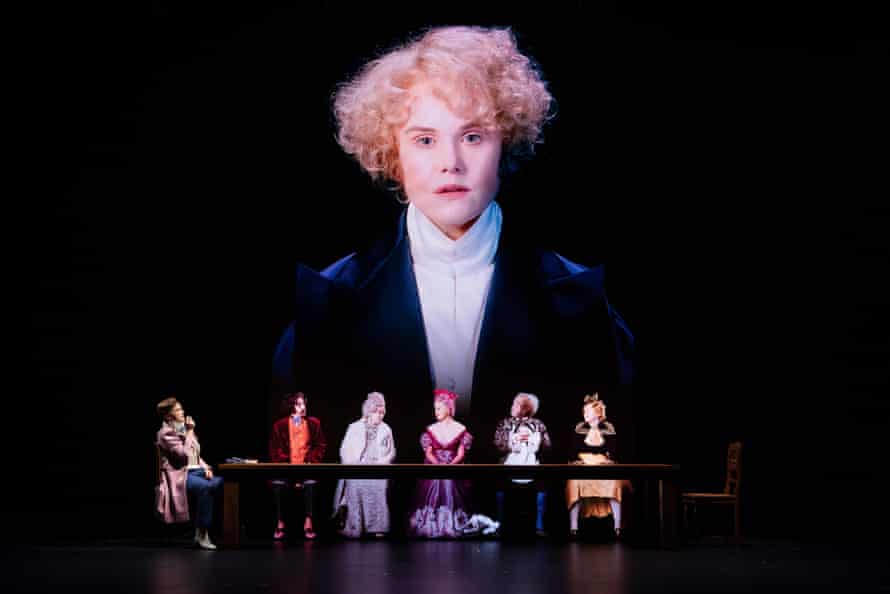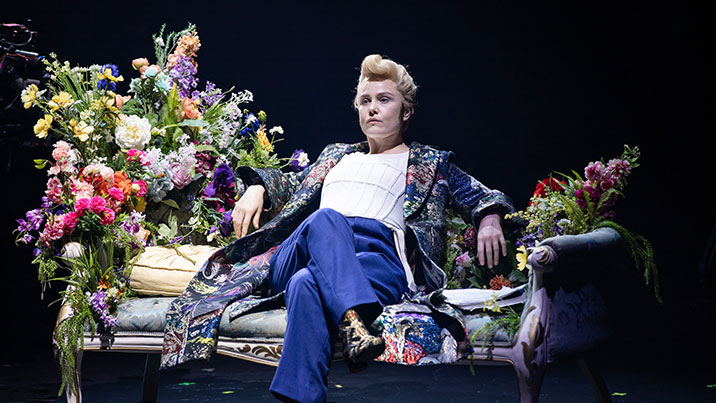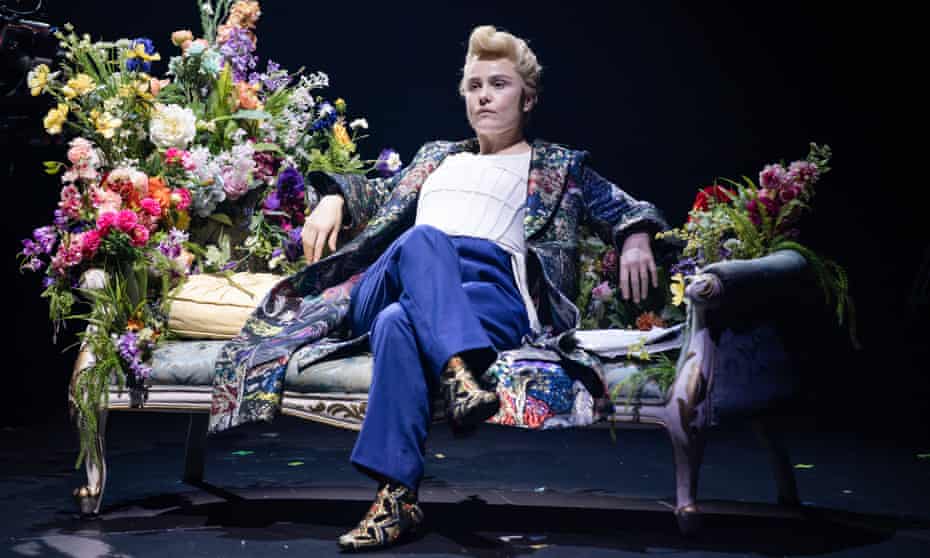There is a rare moment that happens in the theatre, and audiences and artists alike chase it their entire lives: the moment when a stage goes dark at the end of a performance, and after a second or two of stunned silence, the audience erupts. Everyone rises for a standing ovation. Everyone. They clap and clap, and then clapping isn’t enough: they whistle, they trample the ground beneath them to applaud with their feet. It is a generous, thrilled, addictive show of thanks for the gift of story.
It happened on Saturday night at the opening of The Picture of Dorian Gray, adapted and directed by Sydney Theatre Company artistic director Kip Williams. The novel – a classic of Victorian gothic laced with queer hunger – is neatly and minimally abridged here into a smartly measured, dizzyingly beautiful tour de force. Told in omniscient third-person narrative as in the book, Eryn Jean Norvill plays 26 characters in a series of wigs and coats and subtle transformations of the self. She populates the world.

She is painter Basil Hallward, whose adoration of young beauty Dorian Gray – somehow, yes, Norvill too – culminates in that fateful portrait that becomes the site of Faustian bargain. She is Lord Henry Wotton, too, with his droll smile and knowing eyes; she is Sibyl Vane and her vengeful brother James; she is every duchess and lord and broken young man, and she is dazzling. If you didn’t see it before, you will see it now: she is one of the most gifted actors of her generation.
Williams centres and worships Norvill in this story (many of his works feel like love letters to her, his longtime collaborator and friend). She is everything here: she is desire and sin and the mercurial performance of the self. This production does perhaps sacrifice explicit queer male desire to instead revel in the implicit, but Williams has always been more interested in the expression of camp, especially what Susan Sontag calls the “off”, of things being what they are not (“not a woman, but a ‘woman’… to understand Being-as-Playing-a-Role.”) Sontag names this as the farthest extension of the metaphor of life as theatre, and Williams as director lives and thrives here.
Williams has also long been interested in the intersection of live and recorded video feed onstage to explore ideas of artifice and the real, often borrowing the filmic language of melodrama and camp. He reaches his apex here, long-simmering ideas fully realised in an often playful, sometimes devastating interplay of image and mode. (David Bergman is the video designer, and his team of camera operators do remarkable work). At one point, Norvill has a dinner party with seven of her selves; at another, Gray chides Norvill-the-narrator for telling his story. Sibyl Vane’s Romeo and Juliet plays out in miniature on a marionette stage. It’s witty and expansive.

As the story descends into murder and revenge, the staging – designed by Marg Horwell, our best queer aestheticist – explodes with colour and life. Clemence Williams’ composition and sound design leads the way into anachronism via the senses, tugging at us with era-appropriate piano and dramatic chords, and Nick Schlieper’s lighting design follows suit (Gray’s opium den is a pulsing, green laser-lit nightclub). Through this, the moral fable of the novel is made timeless: the ruffles and adornments of Victorian England; you’ll hear the familiar sinuous beats of Donna Summer’s I Feel Love as Gray embraces hedonism; there’s a lip-sync to a number from the 1966 Broadway musical The Apple Tree. Wotton casually receives Botox injections.
Face-tune, front-facing video and selfies punctuate old observations and make them new again. We’ve been preoccupied with youth and beauty and showing only our most aspirational selves for a long time now, and this production both exalts in these constructs and loathes them – much like a great many of us will vacillate between the two. This production knows us. How transformative it is to seen by a production so smart and tirelessly inventive.
We may be making a cautious return to gathering together and sharing space as we navigate the global pandemic, but there is nothing cautious about The Picture of Dorian Gray. It is ambitious, exuberant and whip-smart; it is an embrace of theatre’s past, present and future; it is in fluent conversation with our screens, with our feelings, with our fears, with our collective obsessions. It is in possession of that most rare thing: the transformative, ineffable thing that happens when a show sidles up to you and says directly to your heart: I see you, I know you. This production also says: don’t you love me for it? And we do.

